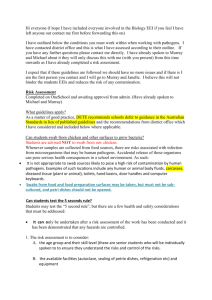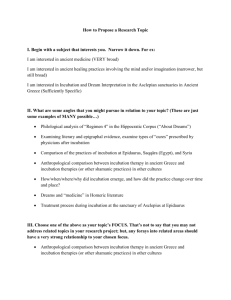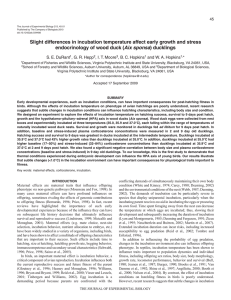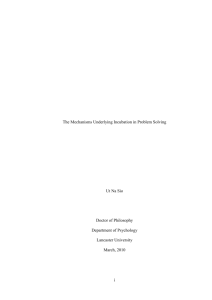Supplementary Material
advertisement
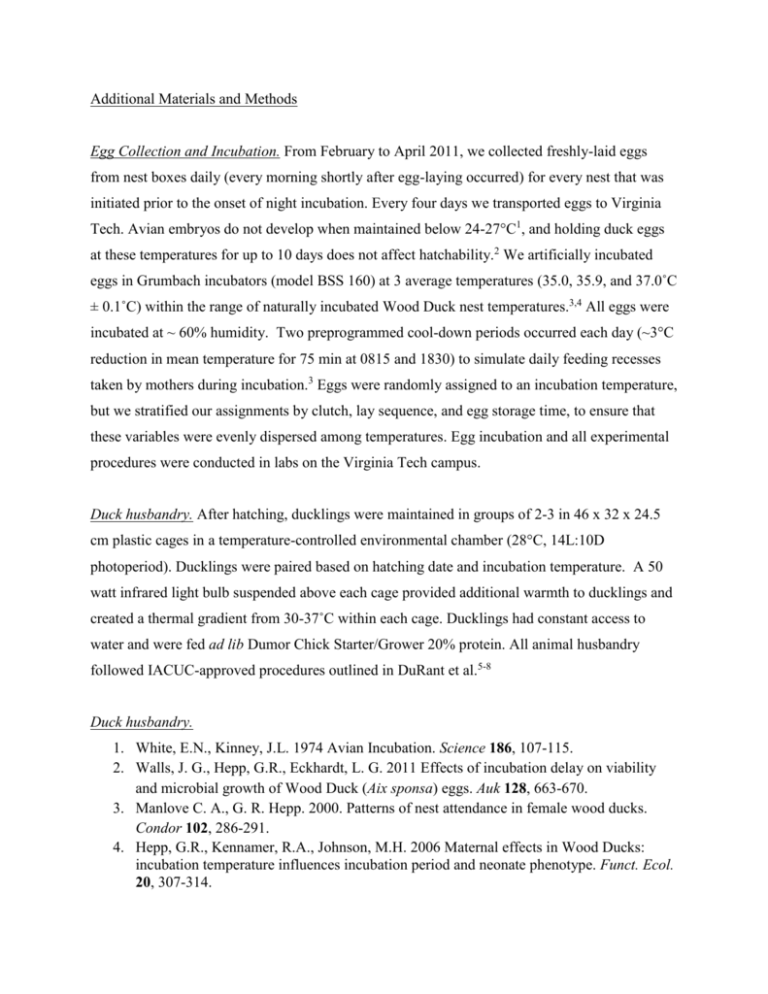
Additional Materials and Methods Egg Collection and Incubation. From February to April 2011, we collected freshly-laid eggs from nest boxes daily (every morning shortly after egg-laying occurred) for every nest that was initiated prior to the onset of night incubation. Every four days we transported eggs to Virginia Tech. Avian embryos do not develop when maintained below 24-27°C1, and holding duck eggs at these temperatures for up to 10 days does not affect hatchability.2 We artificially incubated eggs in Grumbach incubators (model BSS 160) at 3 average temperatures (35.0, 35.9, and 37.0˚C ± 0.1˚C) within the range of naturally incubated Wood Duck nest temperatures.3,4 All eggs were incubated at ~ 60% humidity. Two preprogrammed cool-down periods occurred each day (~3°C reduction in mean temperature for 75 min at 0815 and 1830) to simulate daily feeding recesses taken by mothers during incubation.3 Eggs were randomly assigned to an incubation temperature, but we stratified our assignments by clutch, lay sequence, and egg storage time, to ensure that these variables were evenly dispersed among temperatures. Egg incubation and all experimental procedures were conducted in labs on the Virginia Tech campus. Duck husbandry. After hatching, ducklings were maintained in groups of 2-3 in 46 x 32 x 24.5 cm plastic cages in a temperature-controlled environmental chamber (28°C, 14L:10D photoperiod). Ducklings were paired based on hatching date and incubation temperature. A 50 watt infrared light bulb suspended above each cage provided additional warmth to ducklings and created a thermal gradient from 30-37˚C within each cage. Ducklings had constant access to water and were fed ad lib Dumor Chick Starter/Grower 20% protein. All animal husbandry followed IACUC-approved procedures outlined in DuRant et al.5-8 Duck husbandry. 1. White, E.N., Kinney, J.L. 1974 Avian Incubation. Science 186, 107-115. 2. Walls, J. G., Hepp, G.R., Eckhardt, L. G. 2011 Effects of incubation delay on viability and microbial growth of Wood Duck (Aix sponsa) eggs. Auk 128, 663-670. 3. Manlove C. A., G. R. Hepp. 2000. Patterns of nest attendance in female wood ducks. Condor 102, 286-291. 4. Hepp, G.R., Kennamer, R.A., Johnson, M.H. 2006 Maternal effects in Wood Ducks: incubation temperature influences incubation period and neonate phenotype. Funct. Ecol. 20, 307-314. 5. DuRant, S.E., Hepp, G.R., Moore, I.T., Hopkins, B.C., Hopkins W.A. 2010 Slight differences in incubation temperature affect early growth and stress endocrinology of wood duck (Aix sponsa) ducklings. J. Exp. Biol. 213, 45-51. 6. DuRant, S.E., Hopkins, W.A., Hawley, D.M., Hepp, G.R. 2012a Incubation temperature affects multiple measures of immunocompetence in wood duck ducklings. Biol. Lett. 8, 108-111. 7. DuRant, S.E., Hopkins, W.A., Wilson, A.F., Hepp, G.R. 2012b Incubation temperature affects the metabolic cost of thermoregulation in a young precocial bird. Funct.Ecol. 26, 416-422. 8. DuRant, S.E., Hopkins, W.A., Carter, A.W. Stachowiak, C.M., Hepp, G.R. 2014 Incubation conditions are more important in determining early thermoregulatory ability than post-hatch resource conditions in a precocial bird. Physiol. Biochem. Zool. 86, 410420.





